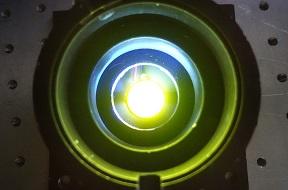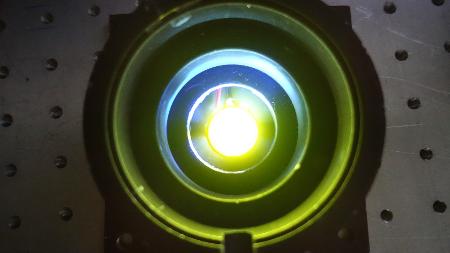A European research consortium, of which the University of Oviedo is a participant, aims to respond to the need for illumination based on sustainable and healthy systems
A European consortium that includes specialists in computing, biochemistry, chemistry, biology and optoelectronics, and in which the University of Oviedo participates, is working on developing new proteins to create a generation of more economical, sustainable and healthy LEDs. These artificial fluorescent proteins would be produced by bacteria - as first reported in an initial article that the consortium has just published in the journal Nature Communications. The aim is to replace the usual LED filters with light-emitting biomaterials based on those used by various marine organisms to communicate, hunt and protect themselves.
LEDs consist of a blue emitting chip and a rare soil-based filter that transforms blue light into the white light we use in our homes. These filters generate white light that have a colour quality which can cause eyesight problems in children and also affect circadian rhythm (sleep disorders) in adults. Furthermore, they are not recycled efficiently and the natural reserves of the materials used to make them are expected to be exhausted within 10-15 years if LED production increases.
The ENABLED project - which is coordinated by the IMDEA Materials Institute, and in which the University of Oviedo participates - through Pedro Braña Coto from the Department of Physical & Analytical Chemistry's Theoretical and Computational Chemistry Research Group. ENABLED is funded by the European Commission through the Future Emerging Technologies (FET) call for applications under the "Horizon 2020" European R&D Framework Programme. The project, which launched in January, runs for 4 years and has a budget of 2.6 million euros.




